The Flathead Lake Monster, Still At Large
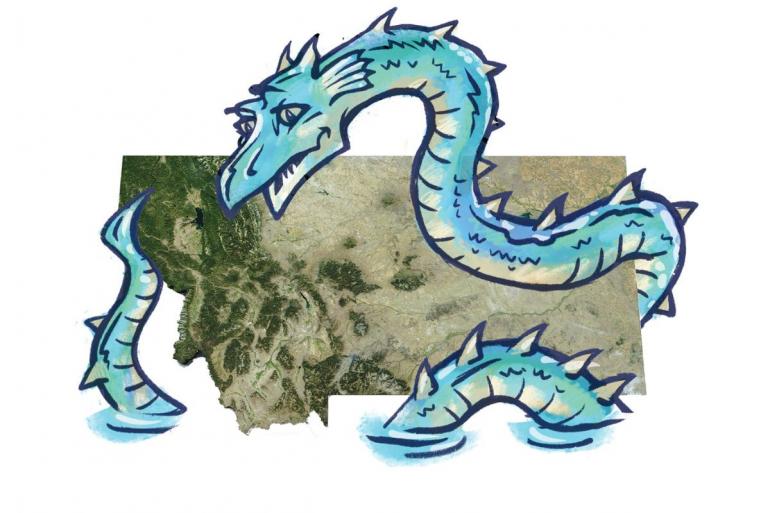
We’ve all heard of the Loch Ness Monster, the mythical serpent that purportedly dwells in the peat-infested waters of the Scottish Highlands. “Nessie” may be second only to Bigfoot when it comes to popular folklore surrounding a cryptid. In western Montana, we have a monster of our own. Flossie—some call her Flessie—supposedly lurks in the chilly depths of Flathead Lake. The Flathead Lake monster doesn’t seem to care what she’s called, as long as someone is watching whenever she flashes her flanks on the surface of the biggest natural freshwater lake in the West. (We refer to the elusive creature as “she” for the scientific reason that it is frequently depicted with long eyelashes.)
Indigenous peoples who lived near the lake for thousands of years before any white settlement have their own traditional Creator stories about the monster, mostly originating with the Kootenai tribe. Sullivan’s Hill near Elmo was originally known as the Monster’s Backbone. According to the tribal story, the monster lived in what they called Monster Lake and was sometimes treated to huckleberries by a bird. The bird’s husband became jealous and killed the lake monster, which now lies forever in the form of Sullivan’s Hill. Some say you can even see red patches along the hillside, remnants of the monster’s blood.
The first recorded “official” sighting of Flessie occurred in 1889, the year Montana achieved statehood. James C. Kerr had converted a 30-foot sailboat into the steamship U.S. Grant and was ferrying cargo and about 100 passengers between Polson Bay and Selish, the northern port on the Flathead River. Kerr saw what he thought was a log up ahead of the boat, but as he drew near, everyone aboard saw what they described as a whale-like creayure swimming along the surface. One terrified passenger pulled out his rifle and took a shot at the thing, but it plunged back underwater. It bears noting that the steamship had recently been outfitted with a full liquor bar, but that’s probably a coincidence.
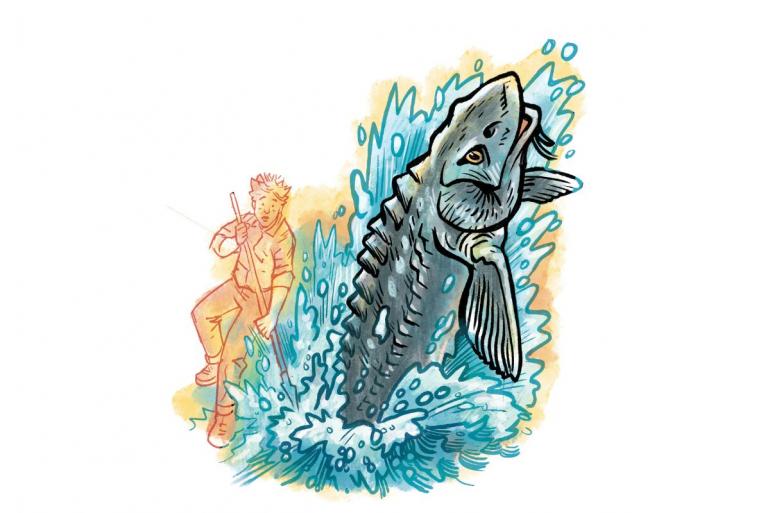
As of this writing there have been more than 115 reported sightings of the Flathead Lake monster, as well as a couple of sketchy photos of… something. Eyewitnesses typically describe the beast as eel-shaped, from 20 to 40 feet in length, sometimes with four flippers. Its long neck curves up out of the water, supporting a small head with a long, pointy snout as it undulates through the water like a snake. It’s dark in color, usually blue-black, with a pair of large, black eyes.
Joseph Zelezny was gigging large fish around 1900 with a spear in the shallow water of Polson Bay (“At the time it wasn’t against the law, as far as we know”) when his two companions spotted what they thought was a log on the bottom. According to his son, Bill, who shared the story in a 1950s interview, Joseph handed his spear to one of the men. “I says, ‘Sock that spear into it and see what it is.’ They did and it shot out of there like a shot out of a gun.” Joseph added that the “log” was ten or twelve feet long. “Oh, I think it was a sturgeon,” he said. “It couldn’t have been anything else.”
The legend of the Flathead Lake monster has been floating around the Flathead Valley and beyond for more than a century, and for every officially recorded sighting, there are several more anecdotal reports of people who believe a large mystery creature is swimming around in the lake. In 2017, Cindy Johnson was in her house in Polson and lost track of her three-year-old son Andrew. She ran down to the shoreline and found the tot, soaking wet, standing at the edge of the lake. He’d fallen into the water, and his horrified mother asked how he’d gotten to shore. “The Flathead monster lifted me up,” he said.
While some witnesses do describe something similar to a sturgeon, many swear that they’ve seen something else entirely. On a warm Sunday afternoon in July, 1953, Mrs. Robert Olson was on the beach with her four sons, near the mouth of the Flathead River at Bigfork. “I was sitting on this big log and looking out into the lake,” she told the Daily Inter Lake, “when this big, huge thing just came out of the water. It looked like a big boat… it was swimming east and west, barely moving, and then it turned quite suddenly and came north and south. Then it turned again and went east and west and then I watched it submerge.” She added that her father had also seen the creature years before.
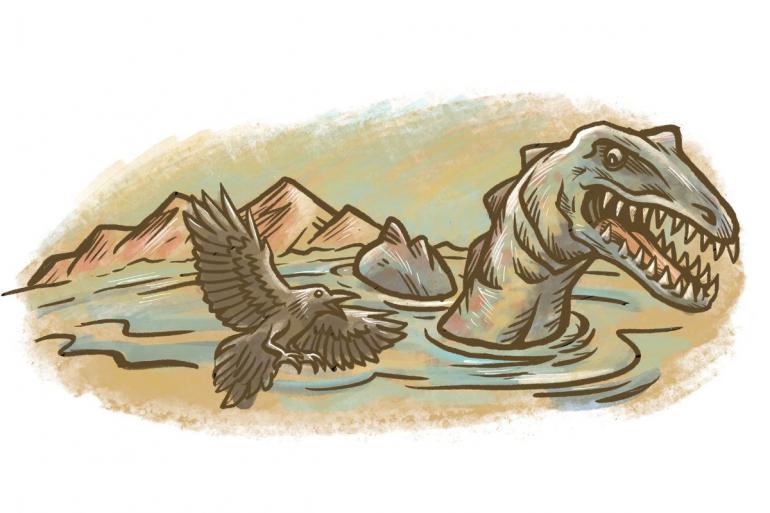
One of the nuttiest chapters in the legend of Flessie happened in 1955 when a group of Polson businessmen formed a corporation called Big Fish Unlimited, which offered cash prizes to anyone who could bring in the “superfish.” Fishermen converged on the area, setting up fish camps and trolling the lake from sunup to sundown, all hoping to tie into the legendary serpent and claim the cash. On the evening of May 28, C. Leslie Griffith, fishing near Cromwell Island off the west shore of the lake, had something big take his bait of eel chunks just as the sun was setting. The beast towed his small boat several miles down the lake, and finally, five hours later, he was able to boat the exhausted creature, which turned out to be a seven-and-a-half-foot-long white sturgeon, weighing in at 181 lbs., 1 oz. It was the biggest fish landed in the contest, and it’s still on display at the Polson-Flathead Historical Museum.
The appearance in the lake of the occasional white sturgeon seems to provide an explanation for many skeptics. It’s not out of the question—these things can grow to a length of twenty feet and live for a hundred years— but it raises a different question: how did these homely fish, which look like giant catfish turned inside-out, come to be in Flathead Lake in the first place? The nearest known population is in the Kootenai River, more than a hundred miles to the northwest. Did some bucket biologist with a sick sense of humor transport live sturgeon to the lake more than a century ago in the hope of establishing them for sport? It’s an outlandish theory, but so are many attempts to explain the persistent reports from people spotting an inland Leviathan plying the waters of the lake.
A few imaginative paleontologists have suggested that what people are seeing could be a plesiosaurus, an aquatic reptile from the Early Jurassic period. Some eyewitness reports are uncanny in their description of this carnivorous dinosaur, from its 40-foot length to its large flippers and snake-like neck, tiny head and long tail. Problem is, they went extinct about 62 million years ago. Could it be possible that there is some kind of holdover living in Flathead Lake, a giant that somehow survived the eons, trapped in the receding waters of Lake Missoula after the last ice age?

Sometimes the combination of waves, sun, reflections, and shadows can lead people to think they’re seeing something on the lake that’s just not there. People report seeing a wake slicing through the slick surface on a windless day when there’s not a boat within sight. Has to be a monster, right? Not necessarily. Such wave action is an easily explained product of lake hydraulics. When surface water is displaced as a boat cuts through the water, the resulting wave continues to angle outward from the boat, efficiently transferring the energy until it is slowed by wind, the shore, or the drag of the bottom when it becomes shallow enough. On this lake, which is 27 miles long and 15 miles wide, a boat wake can roll along for miles before the energy is dissipated, frequently merging with other traveling ripples to make unusual, serpentine shapes in an otherwise smooth surface. When the summer sun bounces off these isolated waves, sometimes people’s imaginations can get the better of them.
These thoughts were going through Cam Logan’s head late one summer afternoon in 2020 as he glided on his paddleboard across the glassy water near his home in Somers. He saw a shape ahead in the water, but it was at least a mile away, too far to tell what it was. “It looked like it was coming right at me and I thought it might be a moose or a grizzly… doing the breast-stroke in perfect timing,” he said. Although the sun was starting to set, he paddled out toward the object, which kept rising eight to ten feet out of the water, and then sank back down to the surface. “I was getting nervous…my mind was making up all kinds of stuff. I thought I was paddling toward a 3,000-pound grizzly.”
When he finally reached the mystery object, Logan was flabbergasted to discover that it wasn’t a grizzly, a moose, or a long-extinct dinosaur, or the Flathead Lake monster. It was a tree.
“It was a green live Doug fir,” he said. “An entire tree upright in the water. I imagine the root ball was holding it upright. The lake was like glass, but that thing would go under water and then go straight up about eight feet. You could set your clock by it. So strange.”
Strange, indeed. Seems Flessie, if she is out there, isn’t the only freaky thing playing peek-a-boo in the deep, frigid waters of Flathead Lake.
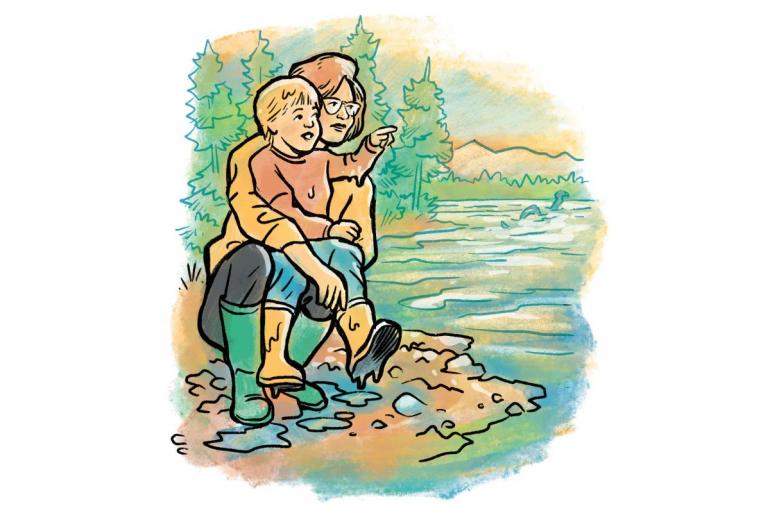







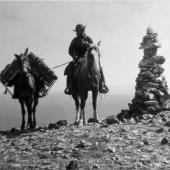




Leave a Comment Here